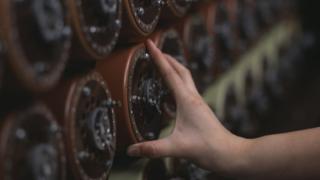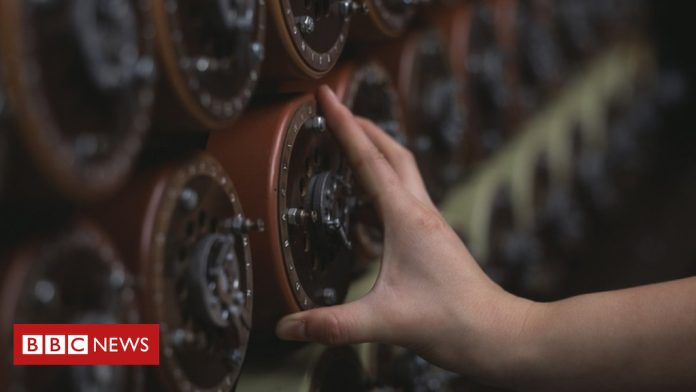[ad_1]
 Image copyright
Image copyright
Science Photo Library
The Bombe was used to work out Enigma machine settings to help read German communications
The UK’s National Museum of Computing has expanded its exhibits celebrating the UK’s wartime code-breakers and the machines used to crack German ciphers.
On Saturday it will open a gallery dedicated to the Bombe, which helped speed up the cracking of messages scrambled with the Enigma machine.
The Bombe was formerly on display at Bletchley Park next door to the museum.
A crowd-funding campaign raised £60,000 in four weeks to move the machine and create its new home.
Modern machines
The replica Bombe is a copy of the electro-mechanical machines used in World War II at Bletchley. It was designed to discover the settings used by German Enigma machines to scramble messages, and make them unreadable.
Code-breakers at Bletchley turned to machines to crank through the millions of settings made possible using the Enigma machine so they could quickly discover which were being used.
Image copyright
Jon Cape
The Bombe will sit in Block H – where the originals were located in wartime
The initial design of the Bombe was drawn up by Alan Turing and later refined by Gordon Welchman. The gallery is being opened on the 106th anniversary of Turing’s birth.
The Bombe is a replica painstakingly constructed by a team recruited by retired engineer John Harper. The team was gathered in the 1990s and the replica was completed in 2007.
The gallery housing the machine will be opened by two of the original Bombe operators. A demonstration will be given of how it was used to crack German codes.
The Bombe will sit alongside other key machines used by code-breakers at Bletchley, including Colossus – a forerunner to modern computers – which was developed to tackle messages passing to and from Hitler and his high command.
The work done by the thousands of workers at Bletchley during the war, cracking the secret messages, is believed to have shortened the conflict by several years and saved many lives.
[ad_2]




